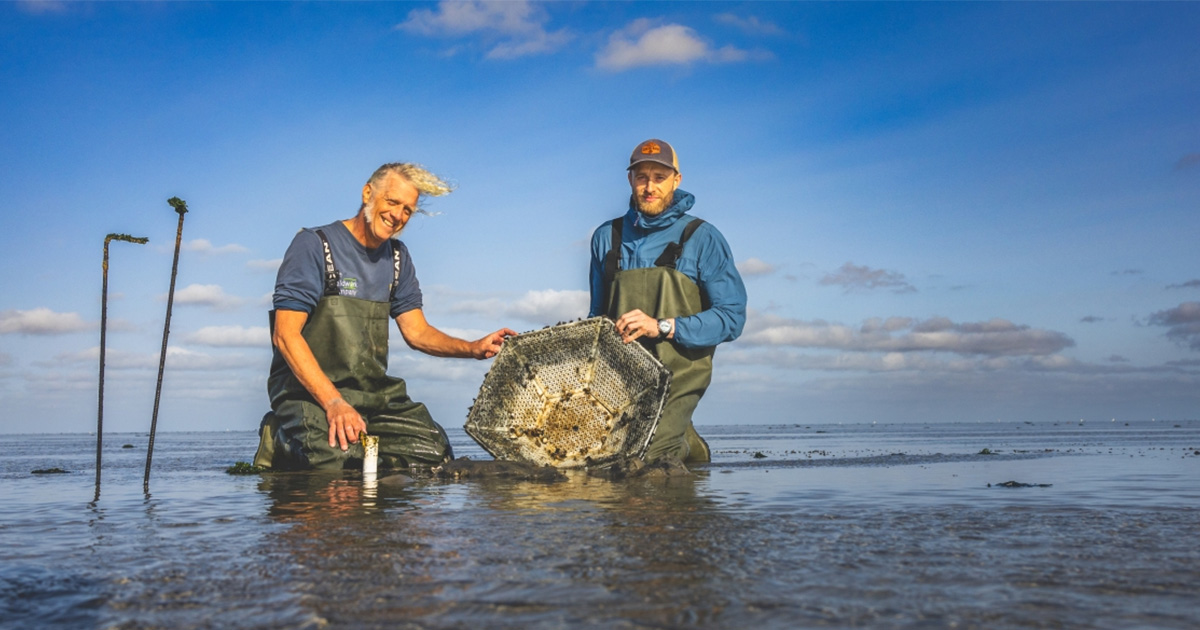50 artificial reef structures were retrieved from the Wadden Sea for detailed analysis in the lab. They will be carefully examined, with each species of flora and fauna documented. This will help to shed light on the success of the design principles incorporated into the artificial reefs and highlight the potential for future improvements.
Holding Up
Previous field inspections have already shown that young mussels prefer the complex environment found in artificial reefs with a small mesh size. It has been observed that different species of algae grow on the reefs as well, depending on the amount of time they spend underwater. This may have an important effect in mussel or oyster settlement. “They should not cover the whole structure of course, but mussels seem to prefer a bit of algae for their settlement,” Varley thinks. Furthermore, the structures hold up well against wave energy and the threat of being buried by sand, risks that are omnipresent in a dynamic marine environment such as the Wadden Sea.
Natural Properties
According to Varley, the key factor for success lies in the design, which incorporates some crucial properties from natural reefs. "Mussels attach to each other using byssus threads. We mimic those in these artificial reefs using coconut rope. In addition, a natural reef is also complex enough to keep shrimp, crabs, and other predators away from the tiny shellfish that want to grow big here. In this experiment, we’re testing how fine the structure in the design needs to be to keep the predators out, but leave sufficient water flow to provide the mussels with food and oxygen."
Critical Threshold
Artificial reefs are designed to give young reef builders such as mussels and oysters a ‘kick start.’ Only when the mass of shellfish becomes large enough, a reef can withstand the pressures from the elements and from predators. "We assume that our biodegradable reef structures will last for a number of years. Before degrading, they should harbor enough shellfish for the reef to survive on its own," Varley hopes.
Roman Recipe
Five different versions of the structures were eventually made, based on two different raw materials. In addition to the biodegradable polymer PBSA, the builders are also trialing ‘Roman cement’ for the first time. "In ancient times, the Romans used a mixture of natural lime with volcanic ash, with which they built extremely strong and long-lasting structures. We have been tweaking the recipe by adding more shell fragments and making them naturally erodable.
Oysters in particular, appear to be attracted when traces of oyster shells are incorporated into a reef. This is something we will also test in the future,” Varley adds.
Ultimate Test
The ultimate "stress test" for the artificial reefs will come next year when the blocks will be placed on the Wadden Sea floor for an extended period of time. An earlier version of these reef blocks was crumbled by traveling ice, after which debris washed up on the Wadden coast of Texel. Varley says, "Even though it is biodegradable, you obviously don't want to cause this kind of pollution. Next winter we will see how the new structures withstand the elements. In any case, we've already seen in recent months that two violent storms have not affected our new designs at all."



